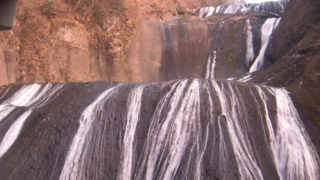IBARAKI PREFECTURE LIVE CAMERAS
Ibaraki Prefecture Northern part (Mito)
Mito City | Hitachi City | Hitachiota City | Takahagi City | Kitaibaraki City | Kasama City | Hitachinaka City | Hitachiomiya City | Naka City | Omitama City | Ibaraki Town | Oarai Town | Shirosato Town | Tokai Village | Daigo Town
Ibaraki Prefecture Southern part (Tsuchiura)
Tsuchiura City | Koga City | Ishioka City | Yuki City | Ryugasaki City | Joso City | Toride City | Ushiku City | Tsukuba City | Kashima City | Itako City | Moriya City | Chikusei City | Bando City | Inashiki City | Kasumigaura City | Sakuragawa City | Kamisu City | Namegata City | Hokota City | Tsukubamirai City | Miho Village | Ami Town | Kawachi Town | Yachiyo Town | Goka Town | Sakai Town | Tone Town
All Over the Prefecture
- Ushikunumaseichikoen | Ushikunumaseichikoen, 383-1 Tomarizaki, Tsukuba-shi, Ibaraki 300-1264
- Fukuroda Falls | Fukuroda Falls, 3-19 Fukuroda, Daigo-machi, Kuji-gun, Ibaraki 319-3523 | Daigo Town Office
- Tsukimachi Falls | Momijien at Tsukimachi Waterfall, 1369-1 Kawayama, Daigo-machi, Kuji-gun, Ibaraki 319-3556 | Daigo Town Office
- Okukuji Nantaisan | Ooenji Sanso, 2211 Korofuji, Daigo Town, Kuji District, Ibaraki Prefecture 319-336 | Daigo Town Office
- Mt. Tsukuba | Tsukubasan Bairin, Numata, Tsukuba City, Ibaraki Prefecture 300-4353 | Tsukubasan Channel
- Tsukuba Station | Intec Co., Ltd., 6F Tsukuba Citia Building, 2-8-8 Azuma, Tsukuba-shi, Ibaraki 305-0031 | Intec Co., Ltd.
- Kuji River and Nakagawa River | camera titles: ① Yukihisa Bridge, ② Shin Nagagawa River Bridge, ③ Sannomaru | site title: Hitachi National Highway River Office, address: Hitachi River National Highway Office, Kanto Regional Development Bureau, Ministry of Land, Infrastructure and Transport, 1962-2 Senba-cho, Mito-shi, Ibaraki 310-0851
- Kasumigaura | camera titles: Nishiura, Kitaura, Tonegawa River, Hitachi River | address: Kasumigaura River Office, 3510 Itako, Itako-shi, Ibaraki 311-2424 | site title: Kasumigaura River Office
- Tonegawa River | camera title: Tonegawa River downstream live camera video, ① Shinmachitoimon, Toride-shi, ② Oshitsuke Tonegawa River (Tone, Ibaraki), ③ Kitachibahonsen Fukawa, Abiko-shi, Chiba, ④ Yokotone, Tonegawa River (East of Ibaraki), Inashiki-shi, ⑤ Otashinden, Tonegawa River (Hazaki, Ibaraki), Kamisu-shi | site title: Tonegawa River Downstream Office
- Tonegawa River | camera titles: Tonegawa River ① Yatojima Water Level, ② Kawamata, ③ Kurihashi, ④ Mebukibashi, Watarase River ① Furukawa, ② Watarase Flood control basin, Omokawa River, ① Otome, Uzuma River ① Nakazato | site title: Tonegawa River upstream Office
- Rivers in Ibaraki Prefecture | camera title: Ibaraki Prefecture river information system river camera information | address: Ibaraki prefectural government civil engineering division river section, 978-6 Kasahara-cho, Mito-shi, Ibaraki-ken 310-0852 | site title: Ibaraki prefectural government civil engineering division
Ibaraki Prefecture Tourism Information
The prefectural capital is Mito City. The prefectural population of Ibaraki is about 3 million people and Mito City has a population of about 270,000 people. The prefecture name is often said “Ibaragi”, but its formal nickname is “Ibaraki”. Once it was called “Hitachi” and “Shimousa”. As tourism resources, there are “Fukuroda Falls“, “Kairakuen“, “Ryujinbashi“, “Hitachi Seaside Park,” “Kasumigaura“, “Mt. Tsukuba“, and “Kashima Jingu Shrine“.
Agriculture is thriving and agricultural output value of the Year 2006 is fourth place in the nation, and the number of farmers in Ibaraki in 2010 became a national second place. A number of agricultural products such as rice, melons, green peppers, lotus roots and peanuts, raised the production value of the top in the nation. Mito became famous for Mito Natto and as natto localities because the production of soybean was thriving since ancient times.
There are various local cuisines such as “Dobu-jiru,” “Tomos”, “sashimi” and “Karaage”, and “angler cuisine” and “minced natto”, the natto with the salted dried radish that is seasoned with soy sauce and seasoning, is famous.
In addition, Speaking of Mito “Mito Komon” has become a standard in the living room. “Mito Komon” is one of the historical dramas that represent Japan, and it is the historical drama of Edo shogunate era that Mito Mitsukuni, Mito Domain second generation lord, was the model of the drama. The bronze statue of Mito Komon was built at Mito station, and it makes you feel that this is the town of Mito Komon. “Mito Komon” is excessively famous, but it is actually not the fact that Mito Mitsukuni, the model of Mito Komon wandered the countries in Japan, and it is said to be the apocryphal in one theory to enhance the prestige of the Mito clan.
“Fukuroda Falls” in Daigo Town of Kuji-gun is the waterfall of height 120m and width 73m, and it is one of the Japan’s three famous falls, along with Kegon Falls in Nikko in Tochigi Prefecture and Nachi Falls in Katsuura Town in Wakayama Prefecture.
The waterfall is also known as the “Yondan-no-taki” because it is a four-stage waterfall, and it is also said to be the waterfall to visit four times because of the beauty that changes with four seasons. The beauty of the autumn leaves is quite well, and it is also possible in the winter to see the waterfall of artistic ice that is frozen waterfall of water.
In “Ryujinkyo (Dragon Gorges)” of Hitachiota City there is “Ryujin Otsuribashi (large suspension bridge)“, which is the length of 375m and the longest bridge in Honshu. It is possible to admire the beauty of the “Ryujinkyo (Dragon Gorge)” from aerial height 100m, and the whole area is a great hiking trail.
“Kairakuen” in Mito City is famous as a park of plum, which Nariaki Mito of Mito clan ninth generation family head erected in 1841. In the park one hundred species and three thousand pieces of plum are planted and “Mito plum festival” is held every year.
